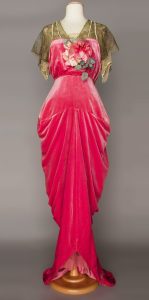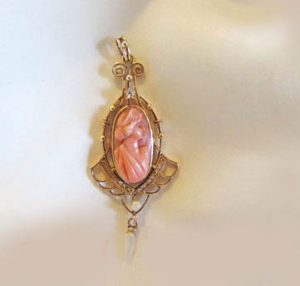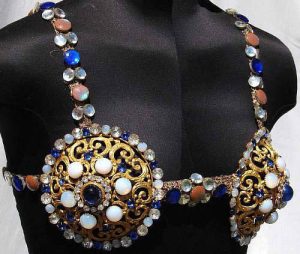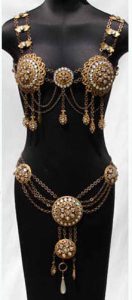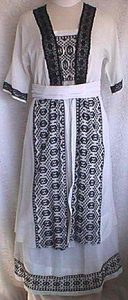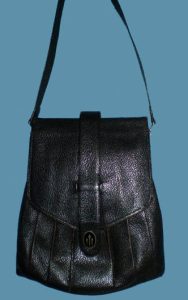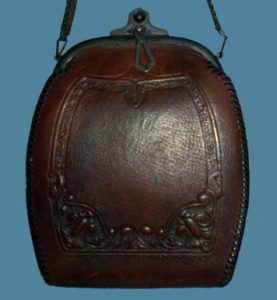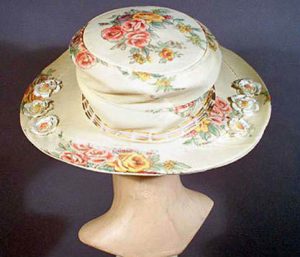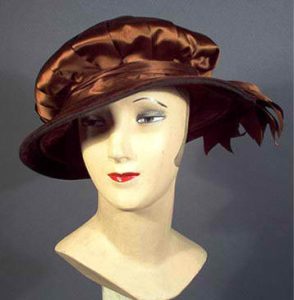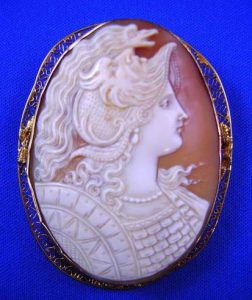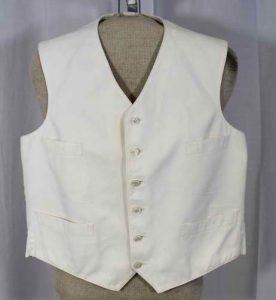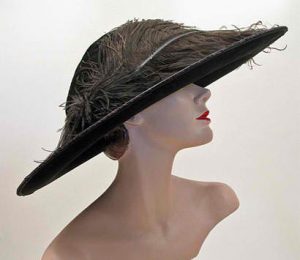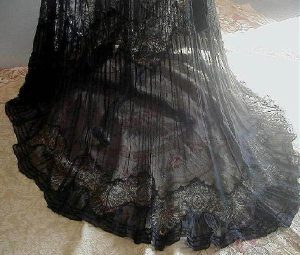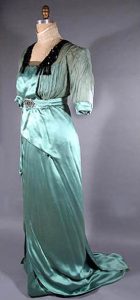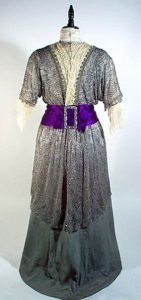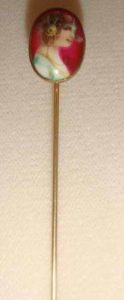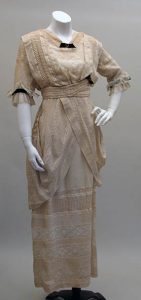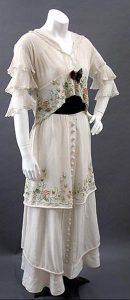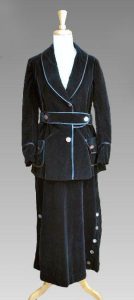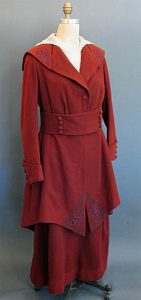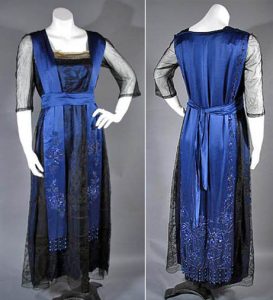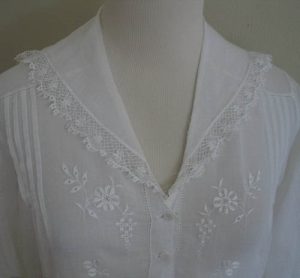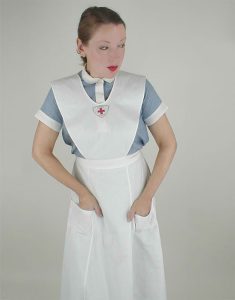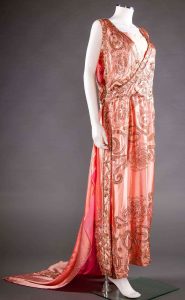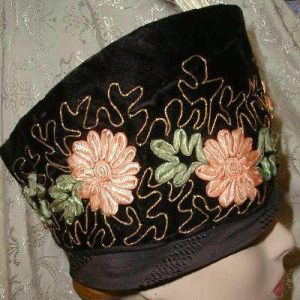Shape and silhouette constantly evolved. More radical styles like the hobble skirt and the lampshade skirt each enjoyed their moment in the sun. The Edwardians became more playful and innovative, taking an interest in asymmetrical draping techniques. Considerably less boning was used in bodices and boning was now solely for supporting the shape as opposed to changing it. Suits were fashionable for daywear and walking was eased due to a really big fashion happening – the skirt hem rose to the ankle!
The First World War provoked yet another fashion – skirts that rose to well above the ankle. Bodices tended to lean towards the higher waist and skirts were full and tiered. Other popular fancies were bat-wing sleeves, over-drapes and flying panel skirts.
Wool and linen walking suits were appreciated for their practicality. Asymmetrical designs were featured in bodices and skirts and preferred fabrics were satin, taffeta, chiffon and lightweight silks, with washable cottons to ease hot summers. Early Art Deco inspired prints were seen in the post war years. The automobile achieved status, so driving clothes were developed to protect against dust, including the aptly named duster, a long, lightweight coat. Hats were veiled to keep the complexion smudge free.
Written by The Vintage Fashion Guild
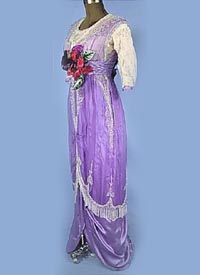
1912 lavender silk beaded gown
Courtesy of antiquedress.com
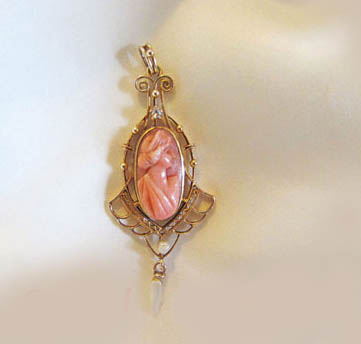
1910s coral cameo lavalier
Courtesy of specialsomethings
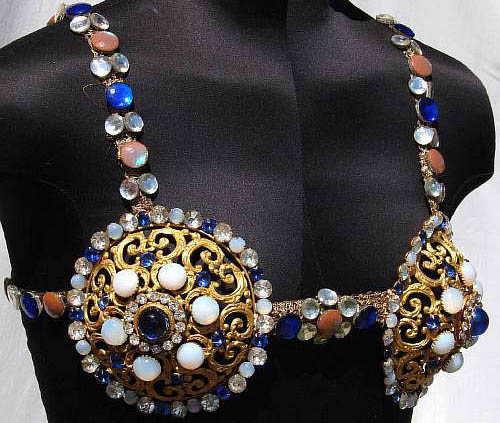
1910s burlesque bra
Courtesy of poppysvintageclothing
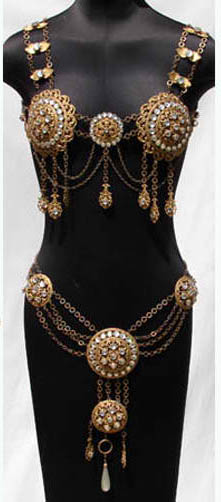
1910s burlesque suit
Courtesy of poppysvintageclothing
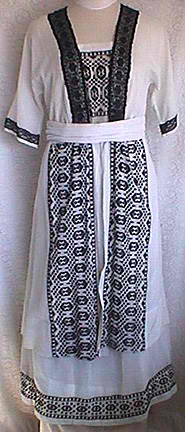
1910s cotton & black lace 2 piece dress
Courtesy of mariansvintagevanities
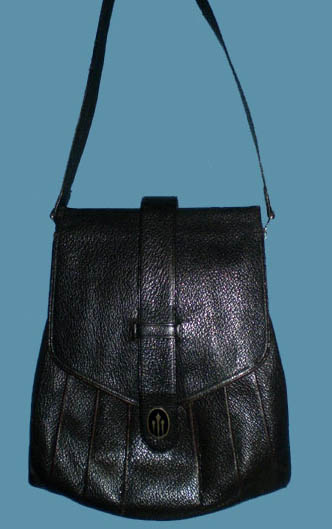
1910s pebbled leather purse
Courtesy of thespectrum
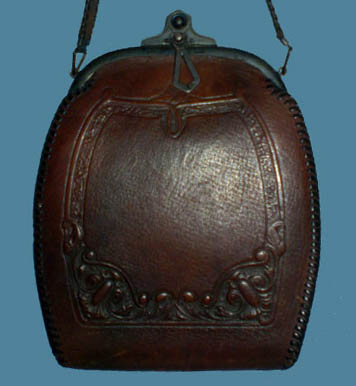
1910s Arts and Crafts embossed leather bag
Courtesy of thespectrum
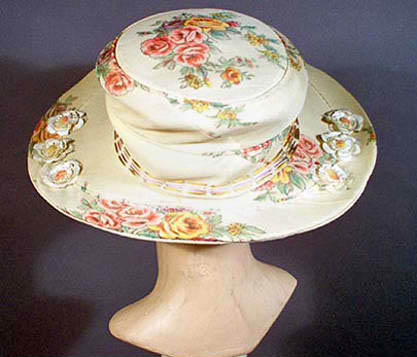
1910s printed crepe hat
Courtesy of pastperfectvintage.com
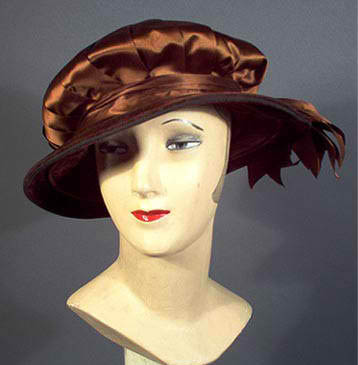
1910 silk ribbon hat (copy of Louise Marsey)
Courtesy of pastperfectvintage.com
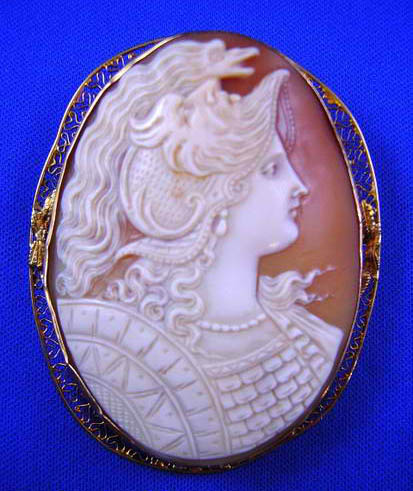
1910 carved cameo shell with 14k frame (Athena)
Courtesy of cur.iovintage

1910 sterling George Cahoone bar pin
Courtesy of linnscollection
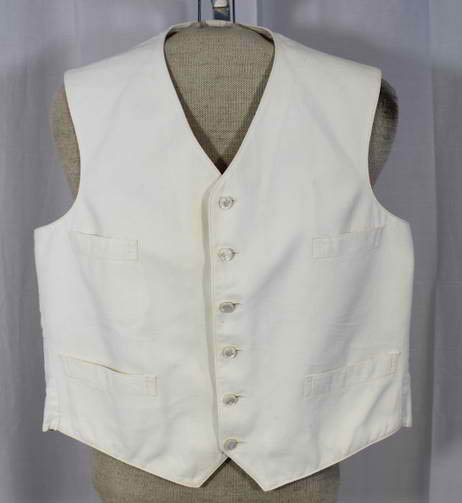
early 1910s gents white pique waistcoat
Courtesy of cur.iovintage
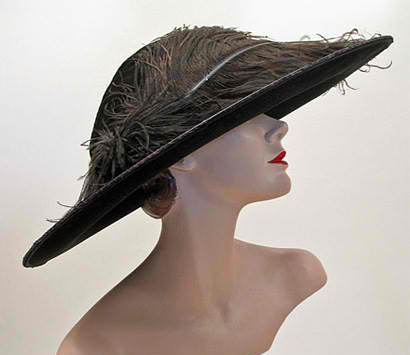
early 1910s beaver hat
Courtesy of pastperfectvintage.com
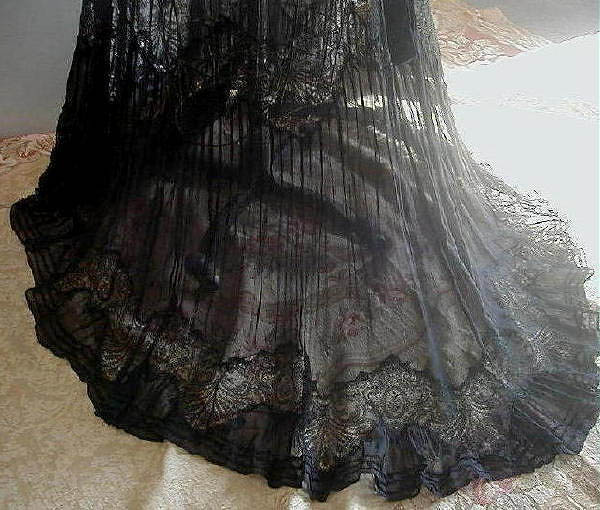
1911 silk gown with french lace (House of Lelong, Paris)
Courtesy of ruedelapaix
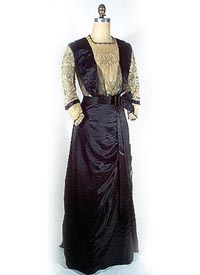
1911-12 black silk and lace dress
Courtesy of pastperfectvintage.com
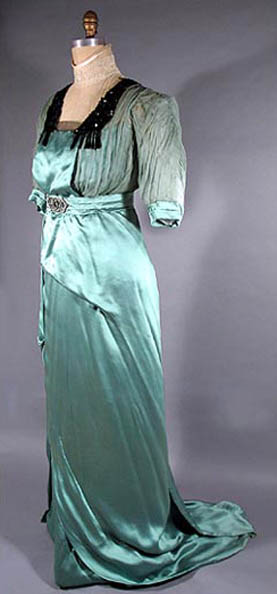
1912 Austrian green silk satin dress
Courtesy of pastperfectvintage.com
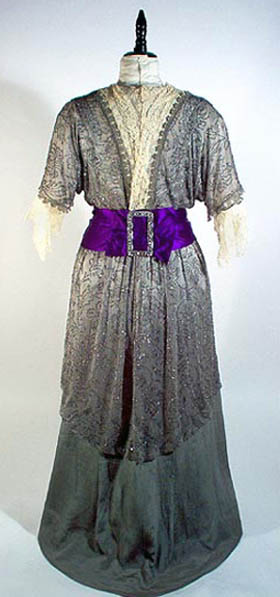
1912 grey Bombazine & beaded net dress
Courtesy of pastperfectvintage.com
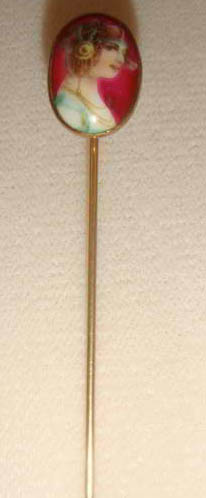
early teens porcelain handpainted pin
Courtesy of cur.iovintage
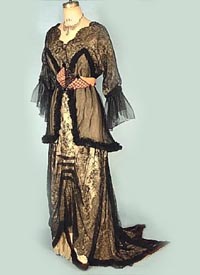
1913 black lace gown
Courtesy of antiquedress.com
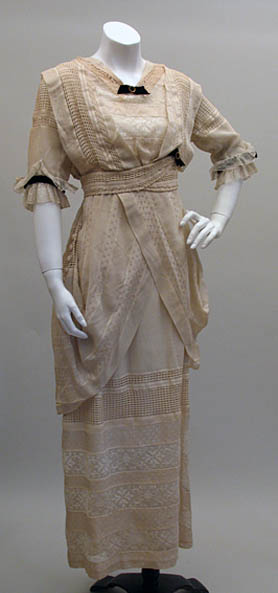
1913 taupe linen dress
Courtesy of pastperfectvintage.com
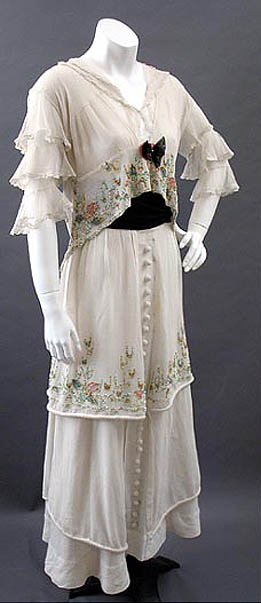
1914 white cotton gauze dress with glass beading
Courtesy of pastperfectvintage.com
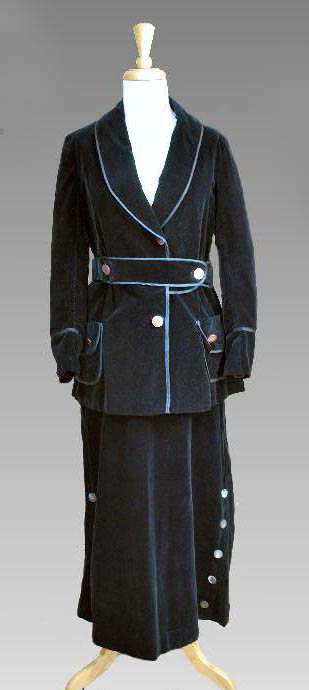
1915 blue velvet walking suit
Courtesy of bctreasuretrove.net
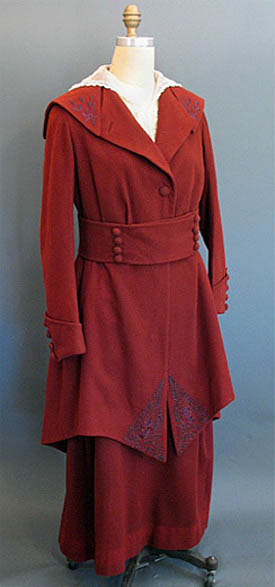
1915 cranberry wool suit from Jordan Marsh Co
Courtesy of pastperfectvintage.com
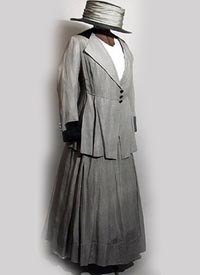
1916 grey silk suit
Courtesy of kickshawproductions.com
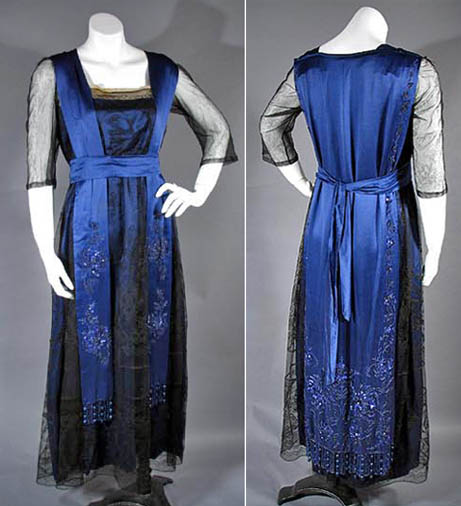
1916 satin dress with beading
Courtesy of pastperfectvintage.com
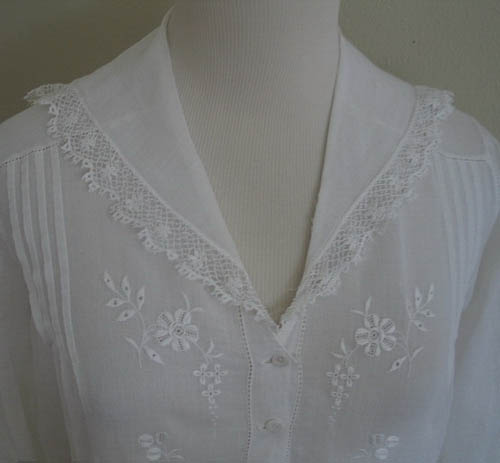
1916 ladies blouse
Courtesy of thevintagemerchant
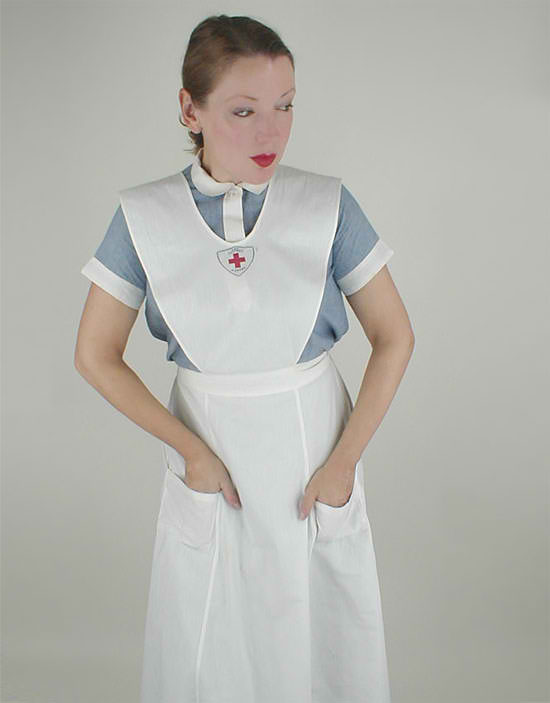
1916 WWI Red Cross canteen workers uniform
Courtesy of denisebrain
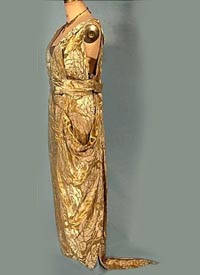
1918 gold lame evening gown
Courtesy of antiquedress.com
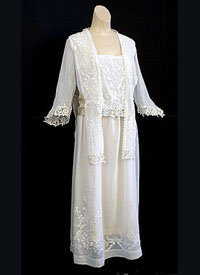
1918 white embroidered dress
Courtesy of vintagetextile.com
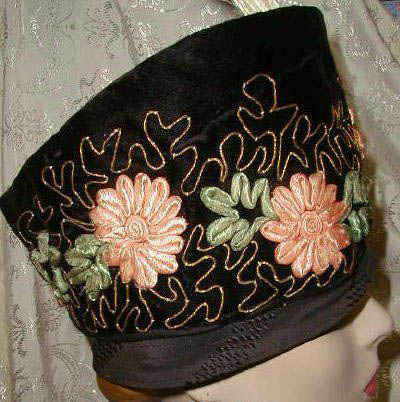
1918 black silk and velvet toque
Courtesy of ruedelapaix
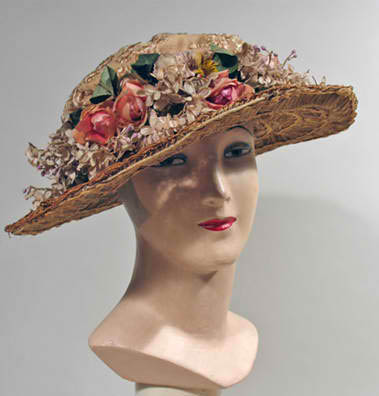
1918 straw floral hat
Courtesy of pastperfectvintage.com
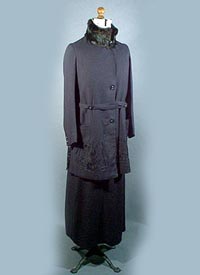
1919 wool suit
Courtesy of pastperfectvintage.com
































